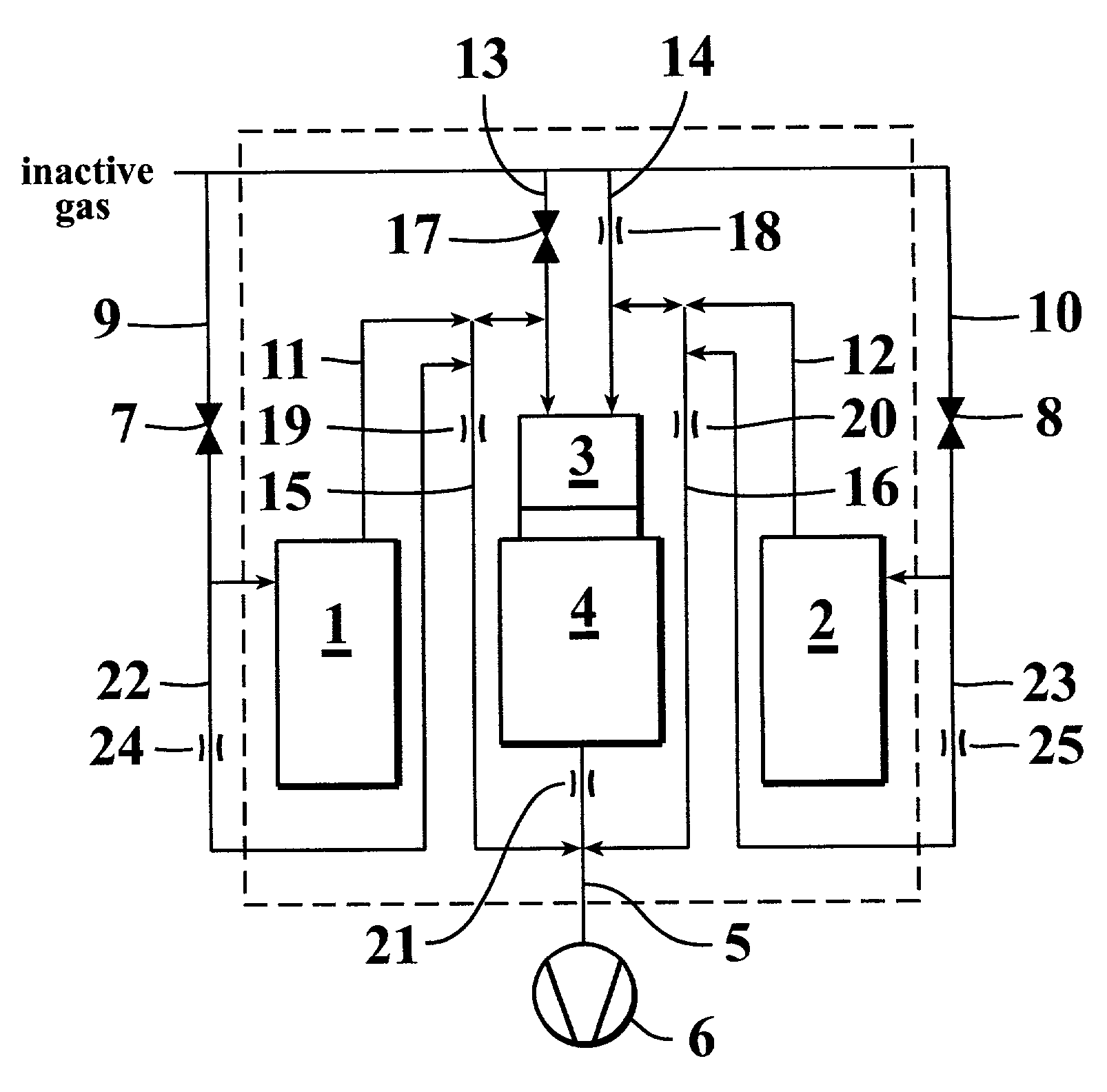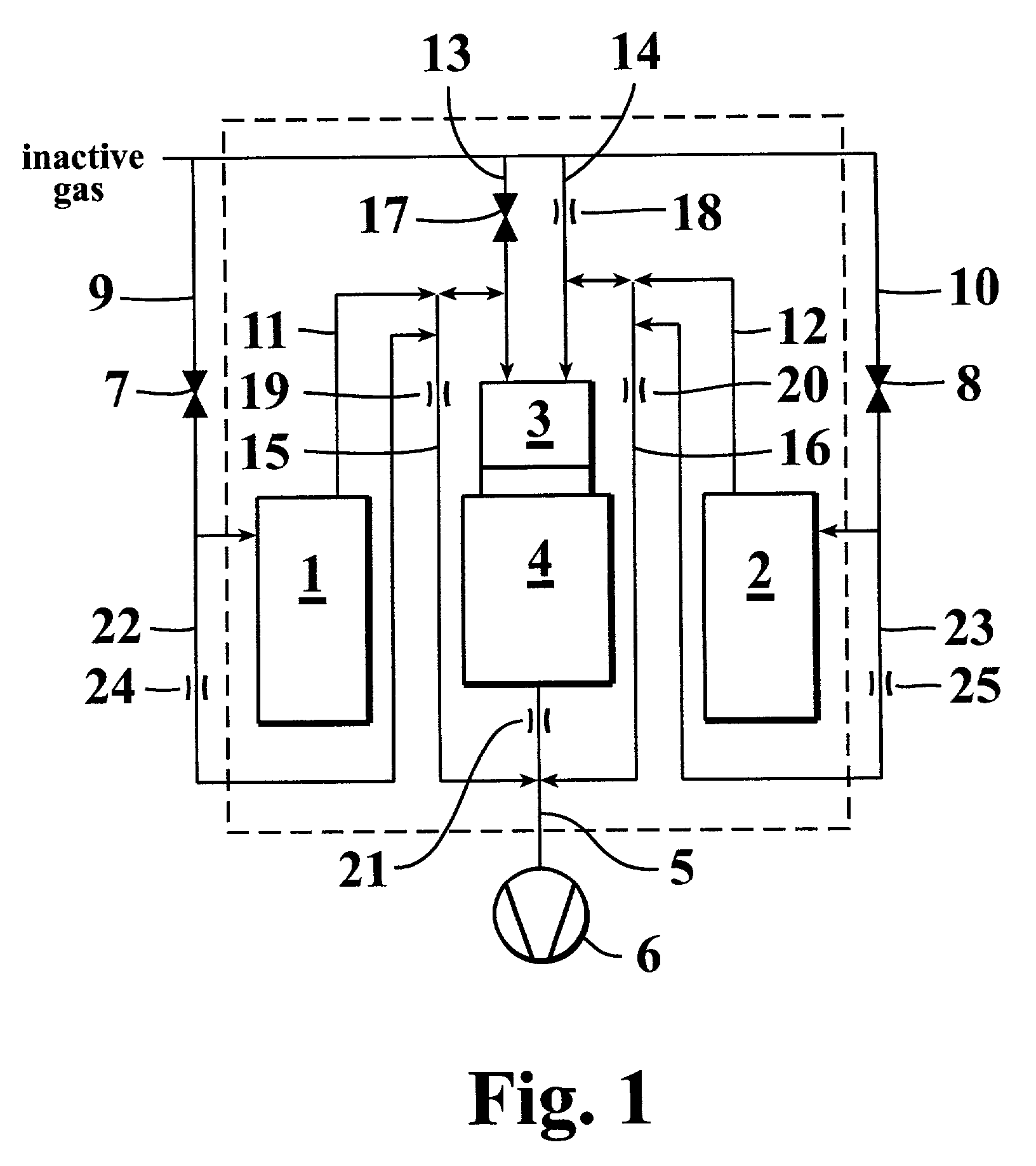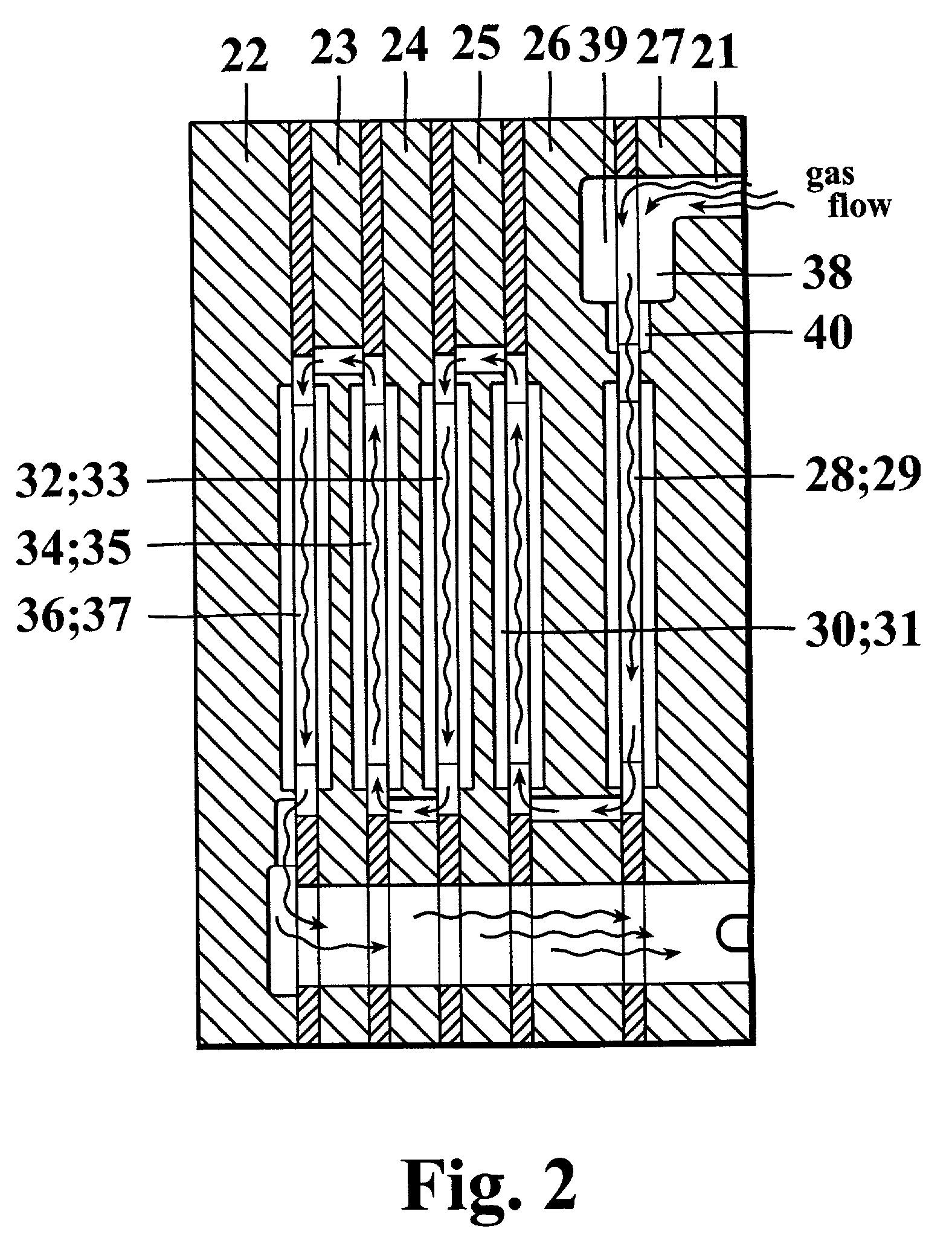Method and apparatus of growing a thin film onto a substrate
a technology of thin film and substrate, which is applied in the direction of crystal growth process, chemical vapor deposition coating, coating, etc., can solve the problems of difficult control of thickness and shape of diffusion barrier, risk of microparticle formation already in infeed lines, and general deterioration of thin film quality, so as to reduce reactor design complexity, improve film uniformity, and efficient and simple
- Summary
- Abstract
- Description
- Claims
- Application Information
AI Technical Summary
Benefits of technology
Problems solved by technology
Method used
Image
Examples
example
[0058]TiO2 films were grown from TiCl4 and H2O on glass substrates in a reaction space having the structure shown in FIG. 2. The reaction space comprised gas flow channels 21 formed in a reactor block consisting of a plurality of reaction chamber parts or elements 22-27 which were stacked or rather fitted adjacent to each other. The reaction chamber parts can be manufactured from metal or quartz, as in the present case. The glass substrates 28–38 were placed in recesses formed between adjacent reactor parts. In each recess, there were two substrates facing each other, one on each side of a central opening. The substrate pair formed the surfaces which the gas flow was contacted with in the recess and on which a thin film was grown. Five pairs of substrates 28–37 were arranged in a serial arrangement to form a cascade. The reactant pulses were fed into the reaction space from two separate gas flow channels 38, 39. The gas flow of one of the reactants is shown by the arrow-headed line ...
PUM
| Property | Measurement | Unit |
|---|---|---|
| pressure | aaaaa | aaaaa |
| temperature | aaaaa | aaaaa |
| temperature | aaaaa | aaaaa |
Abstract
Description
Claims
Application Information
 Login to View More
Login to View More - R&D
- Intellectual Property
- Life Sciences
- Materials
- Tech Scout
- Unparalleled Data Quality
- Higher Quality Content
- 60% Fewer Hallucinations
Browse by: Latest US Patents, China's latest patents, Technical Efficacy Thesaurus, Application Domain, Technology Topic, Popular Technical Reports.
© 2025 PatSnap. All rights reserved.Legal|Privacy policy|Modern Slavery Act Transparency Statement|Sitemap|About US| Contact US: help@patsnap.com



